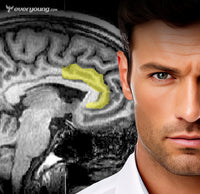4. Different kinds of fat
Next, explore the distinct characteristics and functions of white, brown, and beige adipose tissues. Each type plays unique roles in our physiology, contributing to how our bodies store energy, regulate temperature, and even influence fat loss and overall health.
White Adipose Tissue (WAT)
White fat is the most abundant fat in the human body, serving primarily as an energy reserve. This fat type stores energy in large, single droplets of triglycerides within each cell, which can be mobilized for energy during fasting or increased physical activity. White fat also plays significant roles in hormone production, including leptin, which regulates appetite, and adiponectin, which influences insulin sensitivity and inflammation.
When people talk about losing fat, they refer to reducing their stores of white fat, especially the visceral fat deep within the abdomen. This type of fat is linked to various metabolic and cardiovascular diseases. The subcutaneous layer of fat, which is situated just under the skin and is predominantly white, contributes to body shape and insulation.
Brown Adipose Tissue (BAT)
Brown fat is specialized for heat production, a process known as thermogenesis. Unlike white fat, brown fat cells contain many smaller droplets of lipids and a high number of mitochondria, which gives them their characteristic brown color. These mitochondria are equipped with a unique protein called uncoupling protein-1 (UCP1), which allows the cells to burn calories and generate heat without producing ATP, the energy molecule.
This type of fat is more abundant in infants, playing a crucial role in helping them maintain body temperature. In adults, brown fat is less prevalent but is found in areas such as the neck, around the shoulders, and along the spine. Activating brown fat through exposure to cold temperatures, for example, can increase calorie expenditure and has been investigated as a potential strategy for combating obesity and metabolic disease.
Beige Adipose Tissue
Beige fat is a relatively newly identified type of fat that exhibits white and brown adipose tissue characteristics. Beige fat cells are found within white fat deposits. Still, they can be induced to adopt a brown fat-like function, including thermogenesis, in response to certain stimuli such as cold exposure or certain hormones.
Morphing White into Brown Fat
Recent research has shown that it is possible to convert white fat into beige fat, a process known as "browning," through various methods, including sustained cold exposure, exercise, and certain pharmacological agents - all of which we have actively practiced at Everyoung Research Center. Browning increases the body's capacity to burn calories and produce heat, highlighting a potential therapeutic target for obesity and metabolic disorders.
The transformation of white to beige fat involves the upregulation of UCP1, similar to the mechanism seen in brown fat, leading to an increased metabolic rate and energy expenditure. This area of research offers promising insights into how we might better manage weight and metabolic health by modulating the types and functions of fat in our bodies.
Key ideas
White, brown, and beige fats each play unique and essential roles in our body's energy management, thermal regulation, and metabolic health. Understanding these differences sheds light on the complexity of our biology and opens avenues for targeted approaches to improving health outcomes related to obesity and metabolic diseases. The potential to "morph" white fat into more metabolically active forms like brown or beige fat offers an exciting frontier in developing more effective weight management and metabolic therapies.






